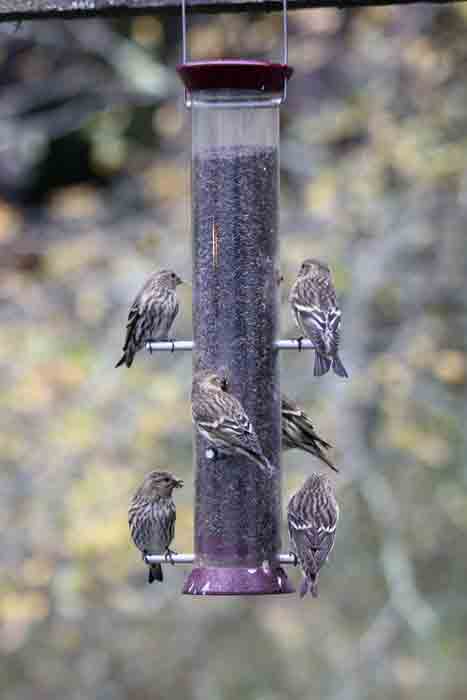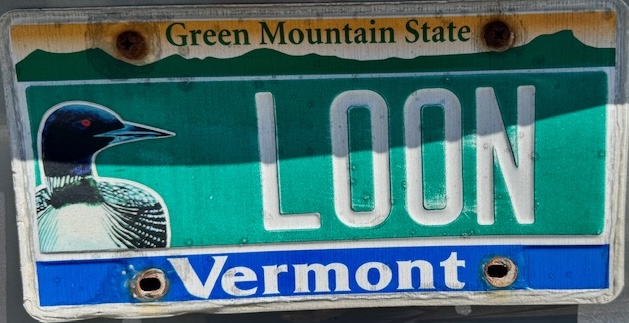 We take in our feeders at night to avoid bear and raccoon problems. (A big raccoon visited two nights ago, startling me as I went out to check a noise on the back deck. It was a eye level – but fortunately the dog didn’t see it in the dark.
We take in our feeders at night to avoid bear and raccoon problems. (A big raccoon visited two nights ago, startling me as I went out to check a noise on the back deck. It was a eye level – but fortunately the dog didn’t see it in the dark.
A few mornings earlier, as I hung up the bird feeder and thistle feeder at daybreak, I immediately had a dozen Pine Siskins flitting about, waiting for me to leave. The same thing has happened all week — we have an onslaught of Siskins — as do other parts of New England in reading the eBird reports and list serves.
Pine Siskins are fun to watch but rather drab, after months of American Goldfinch watching.
Here’s what the Cornell Lab of Ornithology says about them:
This nomadic finch ranges widely and erratically across the continent each winter in response to seed crops. Better suited to clinging to branch tips than to hopping along the ground, these brown-streaked acrobats flash yellow wing markings as they flutter while feeding or as they explode into flight. Flocks are gregarious, and you may hear their insistent wheezy twitters before you see them.
A Canadian ornithologist, Ron Pittaway, each year issues a Winter Finch Forecast. He notes that there is a “widespread tree seed crop failure in the Northeast” this year. We may have a lot of visitors this winter — we’re already seeing a lot of Purple Finches and Dark-eyed Juncos.
This is the first winter in the last four that we are staying in Vermont — might be a good one for winter avian visitors. My feed store friends are going to love me.




